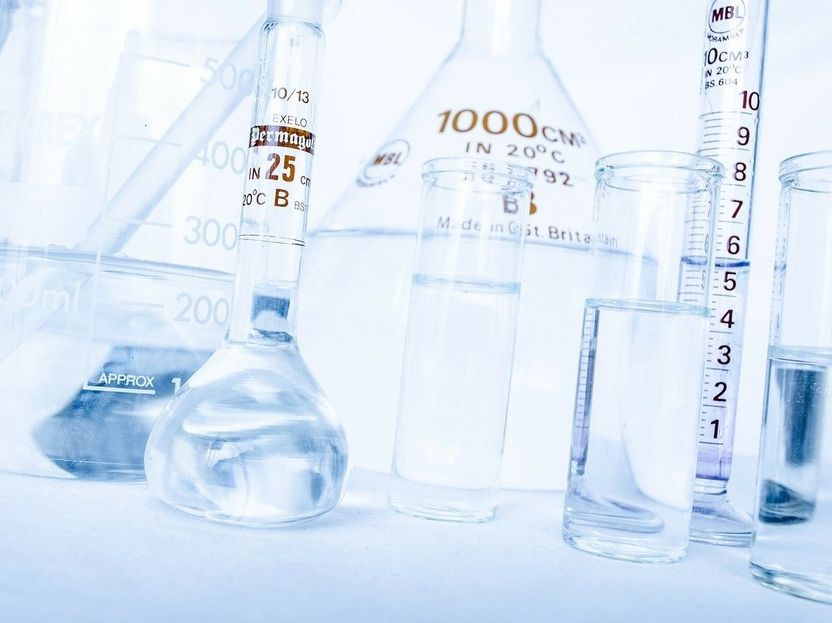How nitrogen is transferred by a catalyst
The detailed understanding will allow for the design of catalysts tailored for specific reactions
catalysts with a metal-nitrogen bond can transfer nitrogen to organic molecules. In this process short-lived molecular species are formed, whose properties critically determine the course of the reaction and product formation. The key compound in a catalytic nitrogen-atom transfer reaction has now been analysed in detail by chemists at the University of Göttingen and Goethe University Frankfurt. The detailed understanding of this reaction will allow for the design of catalysts tailored for specific reactions.

Symbolic image
PublicDomainPictures, pixabay.com
The development of new drugs or innovative molecular materials with new properties requires specific modification of molecules. Selectivity control in these chemical transformations is one of the main goals of catalysis. This is particularly true for complex molecules with multiple reactive sites in order to avoid unnecessary waste for improved sustainability. The selective insertion of individual nitrogen atoms into carbon-hydrogen bonds of target molecules is, for instance, a particularly interesting goal of chemical synthesis. In the past, these kinds of nitrogen transfer reactions were postulated based on quantum-chemical computer simulations for molecular metal complexes with individual nitrogen atoms bound to the metal. These highly reactive intermediates have, however, previously escaped experimental observation. A closely entangled combination of experimental and theoretical studies is thus indispensable for detailed analysis of these metallonitrene key intermediates and, ultimately, the exploitation of catalytic nitrogen-atom transfer reactions.
Chemists in the groups of Professor Sven Schneider, University of Göttingen, and Professor Max Holthausen, Goethe University Frankfurt, in collaboration with the groups of Professor Joris van Slagern, University of Stuttgart and Professor Bas de Bruin, University of Amsterdam, have now been able for the first time to directly observe such a metallonitrene, measure it spectroscopically and provide a comprehensive quantum-chemical characterization. To this end, a platinum azide complex was transformed photochemically into a metallonitrene and examined both magnetometrically and using photo-crystallography. Together with theoretical modelling, the researchers have now provided a detailed report on a very reactive metallonitrene diradical with a single metal-nitrogen bond. The group was furthermore able to show how the unusual electronic structure of the platinum metallonitrene allows the targeted insertion of the nitrogen atom into, for example, C–H bonds of other molecules.
Professor Max Holthausen explains: “The findings of our work significantly extend the basic understanding of chemical bonding and reactivity of such metal complexes, providing the basis for a rational synthesis planning.” Professor Sven Schneider says: “These insertion reactions allow the use of metallonitrenes for the selective synthesis of organic nitrogen compounds through catalyst nitrogen atom transfer. This work therefore contributes to the development of novel ‘green’ syntheses of nitrogen compounds.”
Original publication
Original publication
Jian Sun, Josh Abbenseth, Hendrik Verplancke, Martin Diefenbach, Bas de Bruin, David Hunger, Christian Würtele, Joris van Slageren, Max C. Holthausen, Sven Schneider; "A platinum(II) metallonitrene with a triplet ground state"; Nat. Chem.; 2020
Organizations
Other news from the department science

Get the analytics and lab tech industry in your inbox
By submitting this form you agree that LUMITOS AG will send you the newsletter(s) selected above by email. Your data will not be passed on to third parties. Your data will be stored and processed in accordance with our data protection regulations. LUMITOS may contact you by email for the purpose of advertising or market and opinion surveys. You can revoke your consent at any time without giving reasons to LUMITOS AG, Ernst-Augustin-Str. 2, 12489 Berlin, Germany or by e-mail at revoke@lumitos.com with effect for the future. In addition, each email contains a link to unsubscribe from the corresponding newsletter.

























































